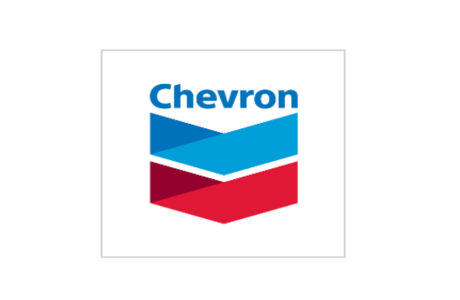Chevron isn’t just trying to survive the energy transition—it’s positioning to grow cash flow, increase returns, and power the next wave of AI-driven demand.
From a stronger upstream portfolio and disciplined capital program to new power projects aimed at data centers, Chevron’s latest strategic update paints a picture of a company that believes its best years are still ahead.
In this post, we’ll break down how Chevron sees the future—and where it believes the real value will be created.
1. A Simple Strategy: Lower Costs, Higher Returns, Lower Carbon
Chevron’s strategy is remarkably consistent and easy to summarize:
- Lower costs
- Higher returns
- Lower carbon
That might sound like corporate shorthand, but the numbers backing it up are real:
- Over the past decade, Chevron has grown production by more than 1 million BOE/d
- At the same time, it has cut capital spending by nearly 40%
- It now returns over three times more cash to shareholders than it did ten years ago
All of this is underpinned by a non-negotiable foundation: safety. The company repeatedly links performance to safe, reliable operations—protecting people, communities, and assets while learning from incidents and tightening systems.
Chevron’s vision is to be the global energy company most admired for its people, partnership, and performance. Practically speaking, that translates into a singular objective: turn a resilient portfolio into dependable, growing cash returns.
2. Energy Demand is Still Rising—and Chevron Wants the Upside
Chevron’s strategic outlook starts with a blunt observation:
Global energy demand is still growing. Oil and gas demand are at all-time highs.
Rather than pivoting away from hydrocarbons, Chevron is leaning into what it sees as its advantages:
- Scale and global reach
- Deep technical expertise in complex basins
- A diversified portfolio across shale, deepwater, LNG, and conventional assets
- A strong balance sheet and capital discipline
Crucially, the company is not pursuing “new energy” for its own sake. Chevron’s approach is pragmatic: it invests in low-carbon and new energy initiatives only where it can compete and earn attractive returns.
Along the way, it has:
- Cut the carbon intensity of its oil production by ~50% since 2016
- Reduced the carbon intensity of its gas by ~17%
- Executed over 100 carbon abatement projects since 2021
The message is clear: hydrocarbons remain core—but they must be produced more efficiently and with lower emissions.
3. Portfolio Reset: More Barrels, Less Capital
Over the last decade, Chevron has essentially rebuilt its portfolio while spending less.
Key structural improvements include:
- Production up: +1 million BOE/d
- Capex down: –40% vs. a decade ago
- Break-even below $50 Brent to cover both capex and the dividend
- Free cash flow growth expected to average >10% annually at $70 Brent over the next five years
At the same time, Chevron has:
- High-graded its asset base
- Divested non-competitive assets
- Integrated multiple acquisitions and exceeded synergy targets
- Raised its structural cost reduction target to $3–4 billion in annual run-rate savings by the end of 2026
The company believes it can increase earnings per share by more than 10% annually through 2030 while lowering absolute costs—a rare combination in a volatile commodity world.
4. Shareholder Returns: A Cash Machine with a Long Runway
Chevron is explicit about its financial priorities:
- Grow the dividend consistently
- Invest capital efficiently
- Maintain a strong balance sheet
- Buy back shares steadily through the cycle
Some key metrics highlight the scale of that commitment:
- Chevron has bought back shares in 18 of the last 22 years
- It plans to repurchase $10–$20 billion of stock annually at $60–$80 Brent
- Buybacks alone are expected to add over $8 of adjusted free cash flow per share over the next five years
- With dividend growth and buybacks at the midpoint of guidance, Chevron estimates it could return over 45% of its current market cap to shareholders in the next five years
On the balance sheet side:
- Chevron holds a AA credit rating
- Its debt capacity and low break-evens give it room to maneuver, even at lower prices
- The company’s leverage metrics are nearly twice as strong as the S&P 500 average at current prices
The takeaway: Chevron wants investors to see it as a durable cash-return platform across the cycle, not just a price spike beneficiary.
5. Upstream: Permian, Shale, Deepwater, and Gas-Led Growth
Chevron argues that it now has one of the premier upstream portfolios in the industry.
A diversified resource base
Its commercial resource base is roughly:
- ~50% shale and tight
- The rest split across deepwater, LNG, conventional, and heavy oil
Over the last decade, the company has unlocked over 7 billion BOE of additional resources.
Permian: The backbone of shale cash flow
Chevron sees the Permian as a multi-decade growth engine:
- Expected to generate about $5 billion in annual free cash flow through 2030
- Moderate capex (~$3.5B starting in 2026) with base wells that have lower decline rates
- Inventory is expected to sustain current production levels through at least 2040
Technology and chemistry are doing a lot of the heavy lifting:
- Advanced chemical treatments are expected to deliver ~10% uplift in recovery
- Chevron plans to scale these treatments to all applicable new wells
- Drilling and fracking efficiencies have improved by over 30%
DJ & Bakken: Scaling best practices
In the DJ Basin and Bakken, Chevron is cross-pollinating shale learnings:
- Well completion efficiency in the DJ has improved 100% over the past two years
- Three-mile (or longer) laterals will make up about 40% of future wells in the Bakken
- Combined, the DJ and Bakken are expected to generate roughly $2 billion in annual free cash flow into the mid-2030s
Argentina & international shale
Chevron’s liquids-weighted position in Argentina offers longer-term upside, with the company pacing development to match infrastructure, market access, and learnings from its broader shale portfolio.
Offshore: Gulf of Mexico, Guyana, and the Eastern Med
Chevron’s offshore story is equally important:
- Gulf of Mexico
- Nearly 300,000 BOE/d of production
- Expected $3 billion in annual free cash flow through the end of the decade
- With Hess integrated, Chevron holds ~20% more Gulf acreage than its closest peer
- Guyana
- Industry-leading offshore resource position
- Six announced developments with break-evens below $35/bbl
- Material production growth expected well into the next decade
- Eastern Mediterranean
- Tamar optimization and Leviathan expansion are underway
- Expected to drive ~25% near-term production growth
Chevron is also ramping up exploration spend by about 50%, targeting new plays across the Gulf, South America, West Africa, and the Mediterranean—with cutting-edge geophysical imaging and ocean-bottom node seismic across much of its acreage.
6. LNG, Refining, and Chemicals: Cash Engines Beyond Upstream
Chevron is not just an upstream story.
LNG: Growing global gas exposure
The company has secured 7 million tons per year of new U.S. LNG offtake, which will:
- Increase its global LNG portfolio by ~25%
- Better balance exposure between Atlantic and Pacific markets
This fits Chevron’s broader view that natural gas and LNG will play a central role in both energy security and decarbonization.
Downstream & marketing: Integrated, flexible, profitable
Chevron’s refining and marketing system is built around integration and market access:
- Strategic positioning in markets where refining, marketing, and retail are tightly linked
- A downstream system designed for flexibility and margin capture
- Use of robotics and drones has already generated $60+ million in value
The company expects to generate more than $4 billion in annual free cash flow from refining and marketing at midcycle margins through the end of the decade.
Chemicals: Feedstock-advantaged and high utilization
Chevron’s chemicals portfolio benefits from advantaged feedstock and proximity to high-growth markets:
- Existing facilities sit at the most competitive end of the global cost curve
- Polyethylene utilization has remained above 100%, even through challenging market conditions, driven by reliability and optimization.
7. New Energies: Powering AI, Hydrogen, Lithium & Carbon Solutions
Chevron’s new energies strategy is focused on profitably enabling the energy transition, not chasing headlines.
Power: Building generation for the AI era
Chevron sees a major opportunity in providing power for data centers and AI infrastructure.
Its first major project:
- Located in West Texas
- 2.5 GW of gas-fired generation, expandable to 5 GW
- Targeting first power in 2027
- Expected to deliver mid-teen returns
This is also Chevron’s first “behind the meter” power project, directly serving large-scale demand rather than just feeding the grid.
Renewable fuels & RNG
In low-carbon fuels, Chevron has built a leading position:
- 2nd largest bio-based diesel supplier in the U.S.
- Expects record renewable natural gas production in 2025
- Strong access to feedstock through its joint venture with Bunge
- Integrated pretreatment, processing, and West Coast distribution give it flexibility and margin resiliency
Hydrogen, storage, and lithium
Chevron is also advancing:
- Green hydrogen and storage at ACES in Utah, with storage capacity estimated at 2–3× the total capacity of all U.S. grid-connected batteries today
- Lithium evaluation on 125,000 acres in the Smackover Formation in Texas and Arkansas, with appraisal drilling starting next year
Carbon capture & emissions reduction
The company has:
- Committed $1 billion to lower-carbon venture investments, including its third Future Energy Fund
- Executed over 100 emissions abatement projects since 2021
- Designed more than 1 million tons/year of CO₂-equivalent abatement
- Deployed methane detection and reduction programs
- Operates one of the world’s largest CCS systems in Australia, with 11+ million tons of CO₂ already stored
The direction is clear: Chevron intends to keep lowering carbon intensity while monetizing its capabilities in storage, capture, and low-carbon fuels.
8. AI: Not Just a Customer, But a Core Capability
AI isn’t just something Chevron wants to power—it’s something the company is using internally at scale.
The centerpiece is Apollo, Chevron’s AI-driven platform that:
- Uses multivariate machine learning
- Analyzes data from more than 50,000 wells
- Predicts well performance across basins
- Helps optimize development plans and allocate capital more effectively
On the ground, AI and advanced analytics are:
- Improving drill and frac efficiencies
- Optimizing cluster spacing and perforation designs
- Helping design new chemical formulations tailored to specific rocks
- Driving real-time optimization and incremental recovery
Chevron believes that AI and digital tools could unlock billions of dollars in additional annual value beyond what is already in its base plan by the end of the decade.
9. The Bottom Line: Why Chevron Thinks It’s Built to Win
Pulling it all together, Chevron’s message to investors and stakeholders is straightforward:
- A reshaped, resilient portfolio across shale, deepwater, LNG, and downstream
- Structural cost and capex reductions that still support growth
- Double-digit EPS and free cash flow growth expected through 2030 at reasonable price assumptions
- Massive cash return potential: over 45% of today’s market cap back to shareholders in five years at current plans
- Pragmatic, returns-driven new energy strategy, with real projects in power, CCS, hydrogen, lithium, and renewable fuels
- A growing AI and digital edge embedded across the business
Chevron’s leadership believes that no other S&P 100 company offers the same mix of cash flow growth, balance sheet strength, and dividend leadership—all while positioning to power the very AI and electrification trends that are reshaping global energy demand.
Whether you’re on the operator side, in midstream, or watching from the capital markets, Chevron is making a clear statement:
This is not the end of the oil era. It’s the beginning of a new cash-rich, tech-enabled chapter.


